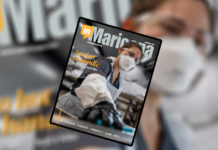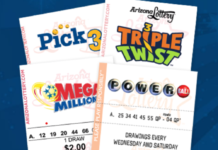Much of this editorial comes from an article written by Cynthia Orange for Hazelden Recovery Centers (www.hazelden.org).
Cheers. The holidays are upon us, and with them come the rituals, parties and pressures that create challenges for most people and dread for many nondrinkers. Those in early recovery from alcoholism are vulnerable to relapse when alcohol is abundant–not only in the beverages at holiday gatherings but in many of the foods served as well.
Liz Scott, an award-winning chef and author of “Sober Celebrations” (Cleveland Clinic Press, 2007) and “The Sober Kitchen” (Harvard Commons Press, 2003), has been sober for almost 10 years. “I quit drinking right before Christmas, which was tough,” Scott said. “When I entered recovery, a counselor brought to my attention that, contrary to popular belief, alcohol doesn’t disappear when cooking. I didn’t believe this at first, but have since learned that from 5 to 85 percent of the alcohol added to a dish is retained, depending on the cooking method, the type of alcohol used and the amount of time it is exposed to heat.
“Alcohol creeps into menus more often during the holidays than it would at other times of the year, plus just handling the bottles, smelling alcohol, or seeing wine or cocktail glasses can trigger cravings. My counselor asked, ‘How will you cope?’ And I knew that if I was to do what I loved yet still stay sober, I’d have to find an answer to that question.” The chef discovered substitutions that work equally as well.
Scott cautions those who cannot drink because of addiction, pregnancy or other health reasons or who simply choose not to drink, to be aware of what they consume at holiday celebrations or office parties. “Maybe that fruitcake is doused with bourbon and you may not realize it until you’ve had one or two bites,” she said. Since alcohol can be present in punches, sauces, marinades, desserts, etc., Scott urges partygoers to ask the host about ingredients before they eat or drink something that may ignite cravings or endanger one’s health. She said it’s perfectly acceptable to ask if something contains peanuts, so why not ask about alcohol? It’s also important for hosts to “know their guest list,” and provide a wide assortment of non-alcoholic beverages for those who don’t drink.
As people get more health conscious, Scott said the stigma of not drinking has lessened considerably, and the selection of alcohol-free beverages has grown. She has also developed recipes for “mocktails,” which she said are completely free of alcohol and more exciting and flavorful than alcoholic drinks.
Scott said that anecdotal evidence suggests that people who have several years of recovery under their belt are usually not bothered by beverages that resemble alcoholic drinks or having non-alcoholic drinks served to them in glasses commonly reserved for wine, beer or alcohol. However, she warns those in early recovery to be careful about “visual cues” that could test sobriety.
Everyone’s journey is different,” Scott said. “Pay attention to how you feel and honor those feelings in order to create a sober lifestyle.” It may be better for newly sober individuals to skip a party this year rather than trying to “white knuckle” it through an uncomfortable situation. Those in early recovery may also want to create their own holiday traditions by inviting friends and family to celebrate the New Year and their new life in ways that don’t include alcohol.
See www.thesoberkitchen.com for recipes and more information about sober cooking.
Cindy Schaider is the Executive Director of the Casa Grande Alliance for a drug-free community.
File photo
InMaricopa.com runs, on a regular basis, opinion pieces submitted by community members. The following article is the opinion of the author, and does not necessarily reflect the views of InMaricopa.com
Have an opinion you’d like to share with Maricopa? Please email it and any applicable photos to [email protected] for consideration.








![Maricopa restaurateur makes Food Network connection [Namkeen Dhaba]](https://www.inmaricopa.com/wp-content/uploads/2024/04/439456716_377105198650519_7536248579664805896_n-218x150.jpg)

![Merging lanes incite more 347 anger A merging lane sign sits on the side of State Route 347 northbound lanes during evening traffic on April 30, 2024. [Monica D. Spencer]](https://www.inmaricopa.com/wp-content/uploads/2024/04/spencer-043024-adot-merging-lanes-347-web-218x150.jpg)




